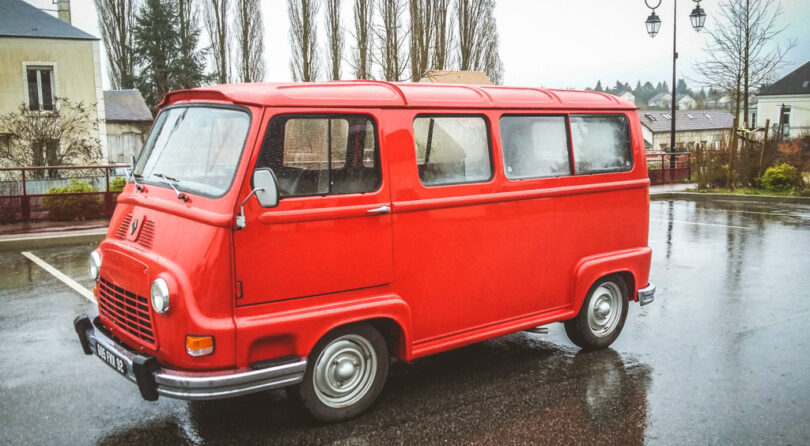
ROAMERS | Rainy Days in Paris with a Red Hot Estafette
Cars Stories
Words and photos by Alessandro Marrone
I hoped waking up with the sun reflecting its rays on the Seine, but unfortunately the weather is identical, if not worse than when I arrived in Rolleboise yesterday, some 80 km from Paris. Two days immersed in the glorious history of Renault, driving from the hotel to the Flins plant aboard an unusual selection of historic models. As always, I am among the first to wake up and have breakfast, so as to reach the parking lot with the cars available and be able to choose what to start this rainy adventure with. I have no doubts, my eyes are immediately captured by a red 180 Estafette, the only van available, as well as an authentic symbol of a brand that has motorized its country by addressing professionals in any sector, from police department to ice cream makers with cheerful carousel in tow.
Introduced in 1959 and produced for twenty years in over half a million units, the Estafette was incredibly innovative, being in fact the first Renault with front-wheel drive. To tell the truth, everything is up front here, with the engine, gearbox and driver literally over the powering axle, in such a way as to leave a flat and widest possible loading surface, a fundamental solution also for the many variations that made it famous over the decades. Engines ranging from 845 cc to 1,289 cc, for maximum power ranging from 32 to 45 horsepower, depending on the specific version.

As mentioned, it’s raining and it’s cold as well. While we wait for the remaining colleagues to join us and choose the car with which we will cover today’s first kilometers, I find shelter inside my Estafette, soon realizing that even if it is not an extremely old model, the cockpit is really reduced to the bare essential. I open the light door and close it once I get on board. The rain falls on the metal roof and every drop is amplified by the empty load compartment communicating with the cabin. I start the engine, so as to warm up the liquids before the imminent departure and I look for some useful reference before starting to move.
Windscreen wipers activated, lights on and a first test of the gear lever, with first speed positioned low. An aspect to keep in mind, in order to avoid engaging reverse when starting, the latter facing up towards the driver. The seat is very high and off-centre, the leather seats are comfortable and visibility ahead is total, thanks to the perfectly squared shapes of the van. It’s time to leave and I decide to be the last one moving, so that I can get used to the generational leap compared to what I usually drive. A journey through time that through country villages offers me a taste of a world that disappeared even before I was born.

The Estafette moves well and despite the large steering action, I am immediately able to take the so-called measurements with clutch and gearbox, always keeping an eye on the gear diagram, providentially shown right on the raw dashboard. There’s space in front of me and I push harder on the throttle. The engine whirls at its best and only realizing that I am approaching a bend with too much emphasis, I realize that for acting on the brake properly it is necessary to step hard on that thing. The Estafette hints at a slowdown and after having avoided locking the wheels, I set the curve closing my eyes and hoping that the thin wheels would grip on the wet asphalt. The van does know what body roll is, more than expected, but I avoid improvising a shortcut in the meadow of an unsuspecting family.
At that point, I put it into second gear and with my heart still racing, I accept the fact that despite a very low center of gravity, the reactions of a forty-year-old Estafette are not what you would expect from anything you can drive in the remaining 364 days a year. With more caution I travel the remaining kilometers smiling at those who wink at this crazy red van. The mechanical flavor that pervades today’s experience is not the result of performance or speed, let alone driving precision, but of something much less obvious than that. The Estafette is an object born and designed to simplify and facilitate working life and today, after so many years and in an automotive world eons away from when it was introduced, it abandons its duties and enjoys a glorious retirement full of celebrations, in its case even more important than a traditional everyday car, given that it has contributed to the working evolution of families and generations of French people and beyond. And for today it was also my red suit hero.



